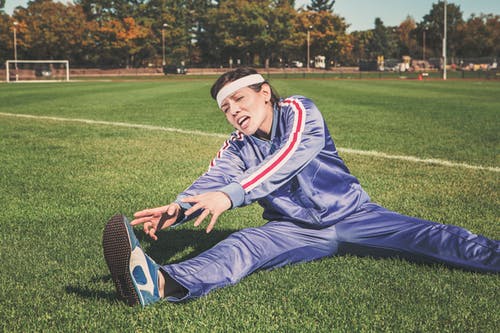
- July 30, 2020
- 12:00 am
- No Comments
Cramping and hydration
Is cramping cramping your style? In this article, we explain how cramping and hydration go hand in hand and what you can do to avoid issues.
Several factors contribute to cramping. Many athletes have increased their training intensity and volumes but possibly overlooked their nutritional needs to meet their supplementary training requirements.
Go back to the root cause
Dehydration may contribute to cramping in athletes along with imbalances in electrolytes and muscle fatigue.
There are a number of reasons why we may get more dehydrated. In the heat, we lose more sweat and are more prone to dehydration through both sodium and water loss. We also get dehydrated in winter. We often reduce our consumption of salads packed with magnesium-rich leafy vegetables over the cooler months and our natural inclination to drink fluids may also be reduced and our thirst mechanism sluggish over winter.
Coffee, alcohol, and some drugs (such as oral contraceptives) may also accelerate the excretion or reduce the absorption of water and electrolytes such as magnesium and calcium. Not all athletes realize they require 20% more magnesium than a sedentary person.
The adrenal gland churns through sodium, vitamin C, and magnesium when we are stressed. It is pretty rare to find a person who can honestly say they are stress-free, especially in the current environment.
How to stop cramping- a reminder of the basics
Increasing magnesium-rich foods such as spinach, broccoli, squash, peanuts, cashews, almonds, oats, brown rice and cocoa (quality chocolate can be beneficial!) pumpkin seeds, chia seeds, and yogurt may help reduce cramping in athletes. These foods may also ward off more advanced issues linked to magnesium deficiency such as fatigue, immune, bone, or cardiovascular issues.
Most athletes grossly underestimate their daily fluid needs when taking into account fluid losses from training. Endurance athletes are notorious for skipping hydration opportunities during a session (especially long-distance runners) despite large sweat losses. Many athletes are shocked at how many liters of fluid they lose in a single session and ignore the increased risk of nausea, vomiting, diarrhea, and other gastrointestinal problems due to dehydration. However, excessive fluid intake also causes issues such as hyponatremia (low sodium concentration in the blood). Therefore, knowing your sweat rate is the best way to determine how much you should be drinking during and post-exercise.
Calculating your sweat rate can be completed at home by following these simple steps:
1. Weigh yourself just before an intense one-hour session
2. Complete your session and record any fluids you had during the session
3. After your workout towel dry yourself
4. Weigh yourself again in the same clothing you had on for the session
5. The difference between the two weight measurements equates to the fluid lost per hour i.e. 1 liter = 1 kg of fluid lost. If you had fluids during your session deduct this amount i.e. 1kg of minus 200ml of fluid ingested during the run = 800ml of fluid lost.
Companies such as The Sweat Lab provide home-based sweat tests you can order online here
Post exercise rehydration
During recovery, you will continue to lose fluids through sweating and urination. Plan to replace 125-150% of this fluid deficit over the next 2-6 hours. Sip a small amount of fluids constantly over a few hours rather than sculling large amounts at once.
Make sure your daily total fluid intake includes both your exercise-associated requirements and physiological needs. Although we are led to believe 8 glasses is sufficient as a basic requirement, national health associations are now suggesting that 15.5 cups (3.7 liters) for men and 11.5 cups (2.7 liters) of fluids a day for women is more appropriate for adults living in temperate climates. Typically 20-30% of your hydration needs are obtained through water-containing foods and the remainder through liquids.
Athletes with a limited intake of dietary sodium (strictly whole foods diet) may benefit from adding a small pinch of sea salt to evening meals or drink bottles (except athletes with elevated blood pressure).
In some cases where magnesium depletion is significant, a magnesium supplement and adequate electrolytes may be beneficial. As with all supplements, it is best to speak with a health professional to avoid the pitfalls of self-prescribing such as gastrointestinal issues and interactions. Athletes with a history of iron or zinc deficiency should be mindful of magnesium forms. Magnesium citrate is often found in supplements as it is well absorbed and specific to muscles however long-term use may interfere with the carrier protein (ceruloplasmin) and contribute to future mineral insufficiency.
Five quick tips for boosting your overall fluid intake:
1. Keep a pot of warm herbal tea or lemon and ginger in your workspace and sip continuously
2. Enjoy a cup of bone broth, miso or soup as a snack or with dinner.
3. Increase your fluid through foods. Enjoy more “wet” dishes such as soups, casseroles or Vietnamese style Pho bowls and enjoy snacks with high water content such as cucumbers, watermelon, oranges and apples.
4. Add warming herbs and spices such as cinnamon and turmeric to your favourite smoothies or juices (made with room temperature water or warm milk and fresh fruits instead of frozen).
5. Stick to a hydration plan during training sessions and keep a record of total intake daily in your training app or journal.
About the Author Kate Smyth is a Sports naturopath, nutritionist and female-centric running coach. She is the founder of the Athlete Sanctuary- a holistic healthcare clinic for athletes of all levels and sporting codes. Kate has a thirst for knowledge with two bachelor’s and a master’s degree under her belt. She has been involved in sports for many decades and competed for Australia in the Commonwealth Games and Olympic Games marathons with a personal best time of 2 hours 28 minutes. For more information visit www.https://https://athletesanctuary.com.au/wp-content/uploads/2023/03/normatec-3-lower-body-system-thumb_720x-1.webp.com.au/wp-content/uploads/2020/05/Seed-Cycle-Blends-scaled-1.jpg.com.au


